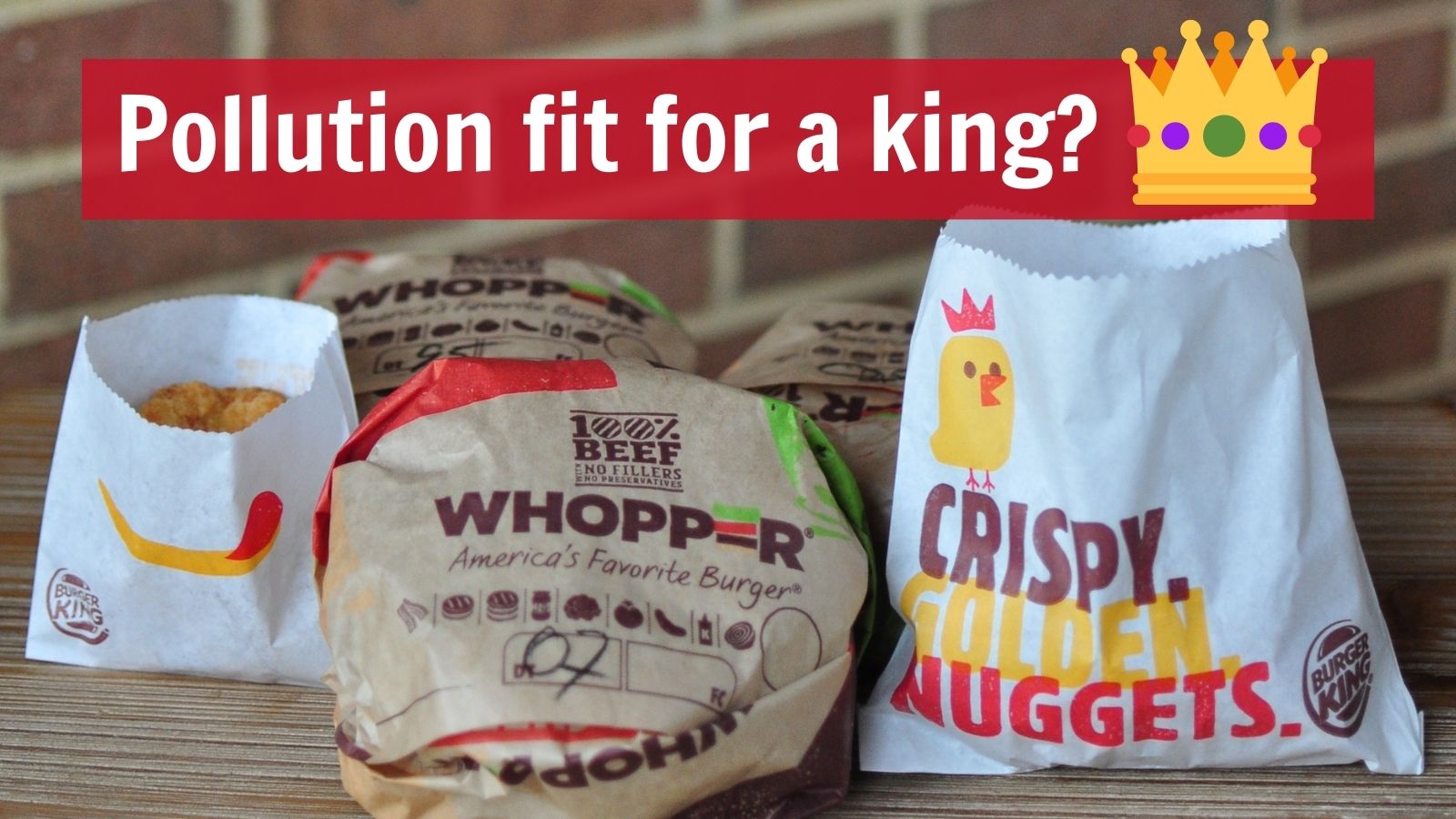Just last week, Wendy’s became the fifth fast food chain to commit to eliminating toxic PFAS chemicals from its food packaging – shortly after McDonald’s and Freshii! This is big news in the fight to end the uses of “forever” chemicals that continue to contaminate drinking water and threaten our health.
Now the big question is, will industry laggard Burger King finally take action? Recent testing found that PFAS chemicals are likely being used in packaging at Burger King—including the wrapper for their Whopper. With more than 2 million Whoppers sold per day, Burger King’s inaction impacts millions of people each week across the country. Join us in telling Burger King and its Canadian parent company Restaurant Brands International to stop polluting our bodies and the environment with toxic trash!
Why is Canada so far behind in protecting us from toxics like PFAS?
It’s not just Burger King and Restaurant Brands International that are lagging. In this year’s Who’s Minding the Store retailer report card, most of the reviewed Canadian companies received poor grades, with a highest score of only a C given to Loblaw Ltd. In contrast, three U.S.-based grocery retailers received grades of A- or above (Target, Walmart and Whole Foods Market).
So why are Canadians disproportionately exposed to toxic chemicals compared to the U.S.? One explanation may be Canada’s antiquated regulatory system for managing chemicals and their risks. The Canadian Environmental Protection Act (CEPA) is over two decades old and fails to protect our health and environment from the impacts of toxics and pollution. This is especially concerning for vulnerable people like racialized communities that live next to polluting industries that contaminate their air and water, and workers who are forced to handle and inhale all sorts of toxic chemicals while on the job. In the absence of effective government action, companies such as Burger King have less incentive to clean up their act.
Reforming Canada’s Environmental Protection Act
Fortunately, earlier this month, the federal government introduced Bill C-28: Strengthening Environmental Protection for a Healthier Canada Act. If passed, we may see stronger protections from toxics coming our way. But the Bill currently needs to be strengthened in several key ways:
- Ensure – and not just pay lip service to – proper assessment and control of toxic chemicals, especially in regard to their cumulative effects and impacts on particularly susceptible groups in society. The impacts of individual chemicals add to each other in ways that far exceed what can be detected when they are assessed on a one-by-one basis. Those impacts are also greater in people at particular life stages, such as children or pregnant women, people living near chemical contamination sources, and people experiencing the biological consequences of poverty and systemic racism.
- Require Canada’s notoriously outdated risk assessment process to incorporate modern scientific understandings of cumulative impacts and environmental injustice. These risk assessments must draw on rigorous independent research and not just large industry-funded studies, which tend to neglect low-dose and cumulative impacts.
- Regulations need to be implemented in a timely manner, including increased mandatory labelling of chemicals in consumer products like cleaning products and furniture, and meaningful enforcement of the newly-proposed ‘right to a healthy environment’ in the reformed CEPA.
We can’t wait any longer for protections from toxics – we’ve already waited over two decades for updates to CEPA. We will be working hard with our partners to address such critical issues as the Bill is reviewed and revised by the federal Standing Committee on Environment and Sustainable Development.










